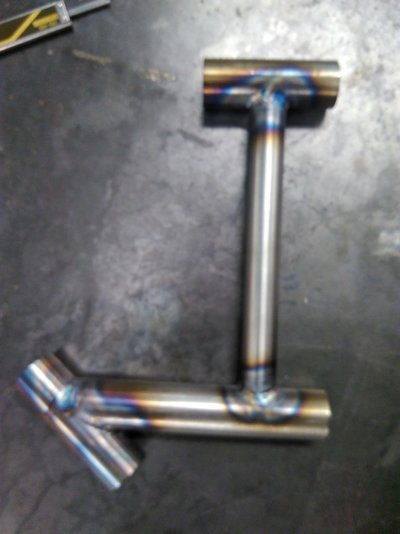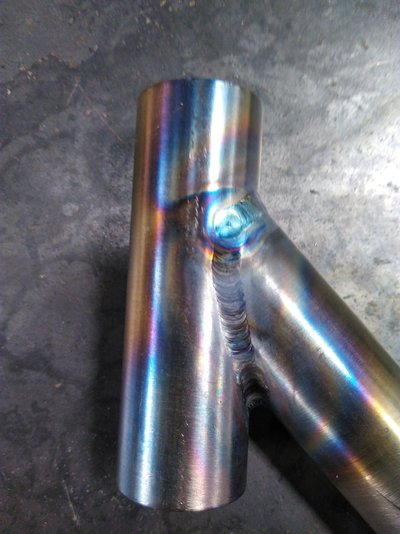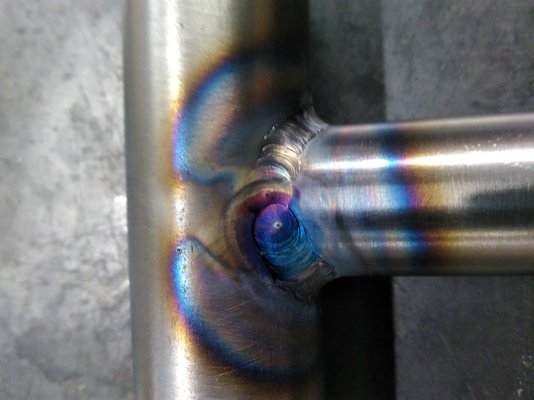You are using an out of date browser. It may not display this or other websites correctly.
You should upgrade or use an alternative browser.
You should upgrade or use an alternative browser.
BCAR A8-10 weld testing
- Thread starter Shox Dr
- Start date
Brad93
Member
- Messages
- 18,668
- Location
- Essex, United Kingdom
Does it have to be done in fixed position?It’s 4130, very nice to weld esp with A18. This was on the button. Not sure on if it specifies it in the regs, its all a bit vauge to be honest.
Shox Dr
Chief Engineer to Carlos Fandango
- Messages
- 18,010
- Location
- East Yorkshire
Seems silly almost. I'm guessing it's not too easy to turn an airframe over haha
Agreed. While most is going to be made at a bench, at some point you’re going to be welding out of position. Especially if it’s held in a large jig.
Shox Dr
Chief Engineer to Carlos Fandango
- Messages
- 18,010
- Location
- East Yorkshire
Test was over seen by Dr Alex Ellin, Senior Lecturer in Aerospace Engineering at Teeside uni.
We work closely with the Uni and Alex has offered the testing facilities, to see for ourselves the differences between A18, A15, A1(gas rod) SIF No8 and SIF968.
We work closely with the Uni and Alex has offered the testing facilities, to see for ourselves the differences between A18, A15, A1(gas rod) SIF No8 and SIF968.
Shox Dr
Chief Engineer to Carlos Fandango
- Messages
- 18,010
- Location
- East Yorkshire
Will be interested to see the differences between s2 and s6
And the A1, I’ve used A1 in non structural stuff [just because I’ve load] I’ve never had any issues with it, but then it’s never been under any stress.
Shox Dr
Chief Engineer to Carlos Fandango
- Messages
- 18,010
- Location
- East Yorkshire
0.5% Moly? Only come across it for pipework/boiler work.
The A1? I only know it as gas rod, ie it’s not triple de-oxygenated. So not to be used for any tig
Hello.
I’m new to this site and was looking for any useful information on Aviation welding BCAR A8-10.
I work in general aviation and was wondering if any body could advise me on what are the best/ most common codes people go for in aviation welding.
Any help would be great. I am new to welding also.
I’m new to this site and was looking for any useful information on Aviation welding BCAR A8-10.
I work in general aviation and was wondering if any body could advise me on what are the best/ most common codes people go for in aviation welding.
Any help would be great. I am new to welding also.
mpats
Member
- Messages
- 1,182
I suppose it depends where you are working, MRO or manufacture?Hello.
I’m new to this site and was looking for any useful information on Aviation welding BCAR A8-10.
I work in general aviation and was wondering if any body could advise me on what are the best/ most common codes people go for in aviation welding.
Any help would be great. I am new to welding also.
What sort of aircraft?
That might help decide what material types you submit and what sort of joints.
I suppose it depends where you are working, MRO or manufacture?
What sort of aircraft?
That might help decide what material types you submit and what sort of joints.
Hi thanks for the reply my current line of work is MRO. Currently working on Cessna 207 Caravans and Dornier G92s, these are probably the biggest aircraft I will be working on for a while.
Shox Dr
Chief Engineer to Carlos Fandango
- Messages
- 18,010
- Location
- East Yorkshire
Hello.
I’m new to this site and was looking for any useful information on Aviation welding BCAR A8-10.
I work in general aviation and was wondering if any body could advise me on what are the best/ most common codes people go for in aviation welding.
Any help would be great. I am new to welding also.
I’ve just been through this. You will need to supply the samples as listed in BCAR A8-10, to an approved test centre.
Once you receive the test results these need to be sent to The CAA. They will then issue docs to say you are approved to weld on the grades you had tested.
If you think the test samples will not cover the joints, and or thickness. then samples of those also need to be tested.
I used Keighley labs in the end, @£65ish per sample.
I was going to use someone else but they wanted a ridiculous amount (£100s per sample).
As you are new to welding, you’ve a lot to learn before you’re thinking of submitting test pieces, esp Aviation.
Good luck
I’ve just been through this. You will need to supply the samples as listed in BCAR A8-10, to an approved test centre.
Once you receive the test results these need to be sent to The CAA. They will then issue docs to say you are approved to weld on the grades you had tested.
If you think the test samples will not cover the joints, and or thickness. then samples of those also need to be tested.
I used Keighley labs in the end, @£65ish per sample.
I was going to use someone else but they wanted a ridiculous amount (£100s per sample).
As you are new to welding, you’ve a lot to learn before you’re thinking of submitting test pieces, esp Aviation.
Good luck
Thank you for the information. Just a few quick questions what samples have you done yourself? And what do these allow you to weld?
As you can appreciate with me being new to welding I don’t really know much about samples or codes.
I know the only materials I will be welding are aluminium and stainless. What would you suggest to work towards in order to be able to weld these on aircraft.
Any information would be fantastic.
Thanks
Mark
Shox Dr
Chief Engineer to Carlos Fandango
- Messages
- 18,010
- Location
- East Yorkshire
Firstly welcome to the site, you’re in the right place to learn, while I can weld, I’m short on words, esp if I have to type them . Luckily for you there are far better welders and people with for more knowledge. So I’ll help where I can.
. Luckily for you there are far better welders and people with for more knowledge. So I’ll help where I can.
Read the doc, it tells you everthing you need to know regarding the types and metals. I’ve done 4130. When I get time I’ll do Stainless Steel, I might do Aluminium. There’s a load more; Titanium for one.
As for something to aim for. Get laying some beads down
 . Luckily for you there are far better welders and people with for more knowledge. So I’ll help where I can.
. Luckily for you there are far better welders and people with for more knowledge. So I’ll help where I can.Read the doc, it tells you everthing you need to know regarding the types and metals. I’ve done 4130. When I get time I’ll do Stainless Steel, I might do Aluminium. There’s a load more; Titanium for one.
As for something to aim for. Get laying some beads down









